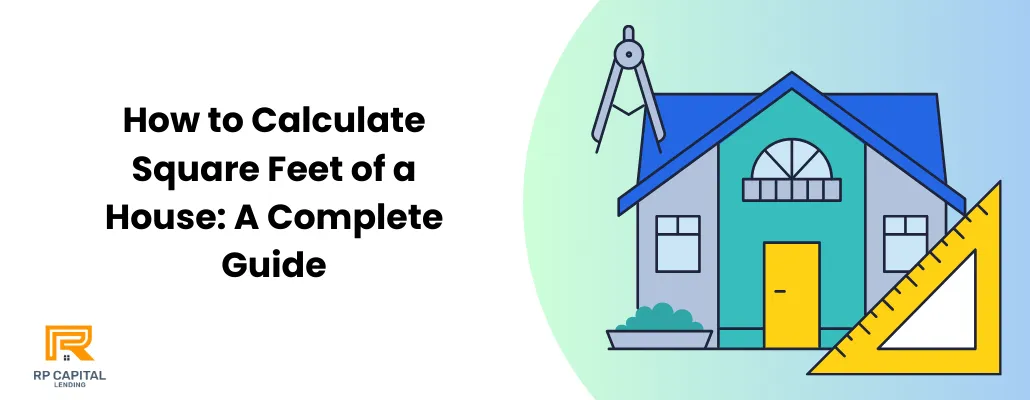Blog

How to Calculate Square Feet of a House: A Complete Guide
Calculating the square footage of a house is one of the most essential tasks for homebuyers, sellers, and even homeowners planning renovations. Understanding the total square footage gives a clear picture of the home’s value and potential, making it easier to assess its worth and plan projects like flooring, painting, or remodeling.
This guide will take you step-by-step through the process of calculating your house's square footage, using accurate methods and tools.
Why Knowing Your House’s Square Footage Matters?
The square footage of your house plays a crucial role in determining its market value, property taxes, and even insurance premiums. Real estate agents, appraisers, and potential buyers look at the size of your home to make comparisons in the market. Here are a few reasons why house square footage (house sqft) is so important:
Property Value: Larger homes generally have higher market values.
Insurance: Homeowner insurance policies are based in part on the size of the home.
Renovations: Knowing the square footage is necessary for purchasing materials like flooring and paint.
Energy Costs: A larger home may consume more energy for heating and cooling, impacting your monthly utility bills.
How to Calculate the Square Footage of a House?

The general formula for calculating square footage is simple:
Total Square Feet=Length×Width
However, calculating the square footage of a house isn’t always as straightforward as it seems. Here’s how to get an accurate measurement:
Step-by-Step Process for Measuring Square Footage
1. Draw a Floor Plan (or Use Existing Blueprints)
Having a basic sketch or blueprint of your house layout can simplify the measuring process. Even if you don't have blueprints, drawing a rough layout will help keep your measurements organized.
2. Measure Each Room
Start by measuring each room individually. Measure the length and width of every area you want to include, such as:
Living rooms
Bedrooms
Kitchens
Bathrooms
Hallways
Dining areas
Use a measuring tape or a digital laser measure for precision. Round your measurements to the nearest foot or half-foot.
3. Multiply Length by Width for Each Room
After measuring each room, calculate the area by multiplying the length and width. For example, if your living room is 15 feet long and 10 feet wide:
Living Room Square Footage=15ft×10ft=150sq ft
Repeat this for each room and record the square footage.
4. Account for Irregular Spaces
Not all rooms are perfect squares or rectangles. If you have a space that’s L-shaped, split it into smaller rectangles, measure each section, and then add the areas together. For triangular areas (like attics or under-the-stair storage), use the formula:
Area of Triangle=21×Base×Height
5. Exclude Unlivable Spaces
When calculating house square footage, you should exclude areas like:
Garages
Basements (unless finished)
Attics (unless finished and meet height requirements)
Outdoor areas (like patios)
These areas generally do not count toward the total square footage of a home.
6. Add Everything Together
Once you have calculated the square footage for all the livable areas, add them up to get the total square footage of your house.
Square Footage by Room Type: A Handy Guide
Here’s a general breakdown of what you can expect for various room types in a typical house:

This guide gives you a rough idea of the size of each room, but every house is unique. Always measure to get precise figures.
Tools for Measuring Square Footage
If you don’t have access to blueprints or simply want a faster way to calculate your home’s square footage, consider using one of the following tools:
Measuring Tape: Simple, inexpensive, and effective.
Digital Laser Measure: Offers precision and ease for larger areas.
Smartphone Apps: There are several apps available that can calculate square footage using your phone’s camera.
FAQ: Calculating House Square Footage
Q: Can I include the basement in my total square footage?
Only if the basement is finished and meets local height and egress requirements. Otherwise, it's not considered livable space.
Q: How do I calculate the square footage of an irregularly shaped room?
Break the room into smaller, regular shapes like rectangles and triangles, calculate each area separately, then add them together.
Q: Should outdoor spaces be included in the square footage?
No, outdoor areas such as patios and balconies should not be included in the square footage.
Q: Do closets count toward square footage?
Yes, as long as they are within the livable area of the house.
Q: What should I do if I can’t get an accurate measurement myself?
You can hire a professional appraiser or real estate agent who can give you an official square footage measurement.
Conclusion: Calculating Square Footage Accurately
Knowing the square footage of your house is vital for understanding its value and making future plans. Following the steps outlined in this guide, you can easily calculate the square footage of your home and avoid any costly mistakes in renovations or property evaluations.
Remember, accurately measuring your house’s square footage can save you time, money, and headaches down the road.
RP Capital Lending is a d.b.a of RP Capital Partners Inc (NMLS # 2469193) | Privacy Policy
Copyright © 2022. All Rights Reserved.
Disclaimer: Loans only apply to non-owner occupied properties. Rates, terms and conditions offered only to qualified borrowers, may vary upon loan product, deal structure, other applicable considerations, and are subject to change at any time without notice.

